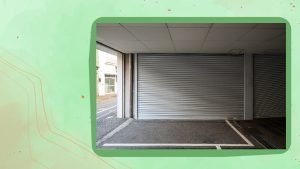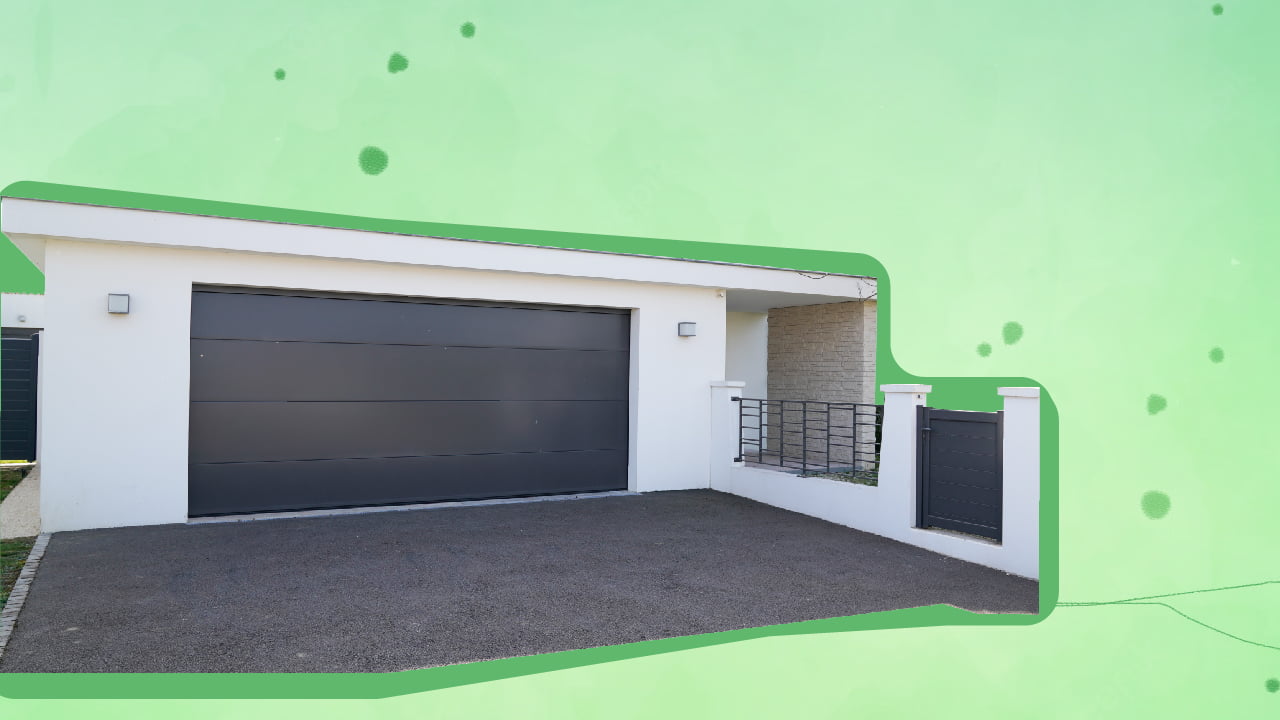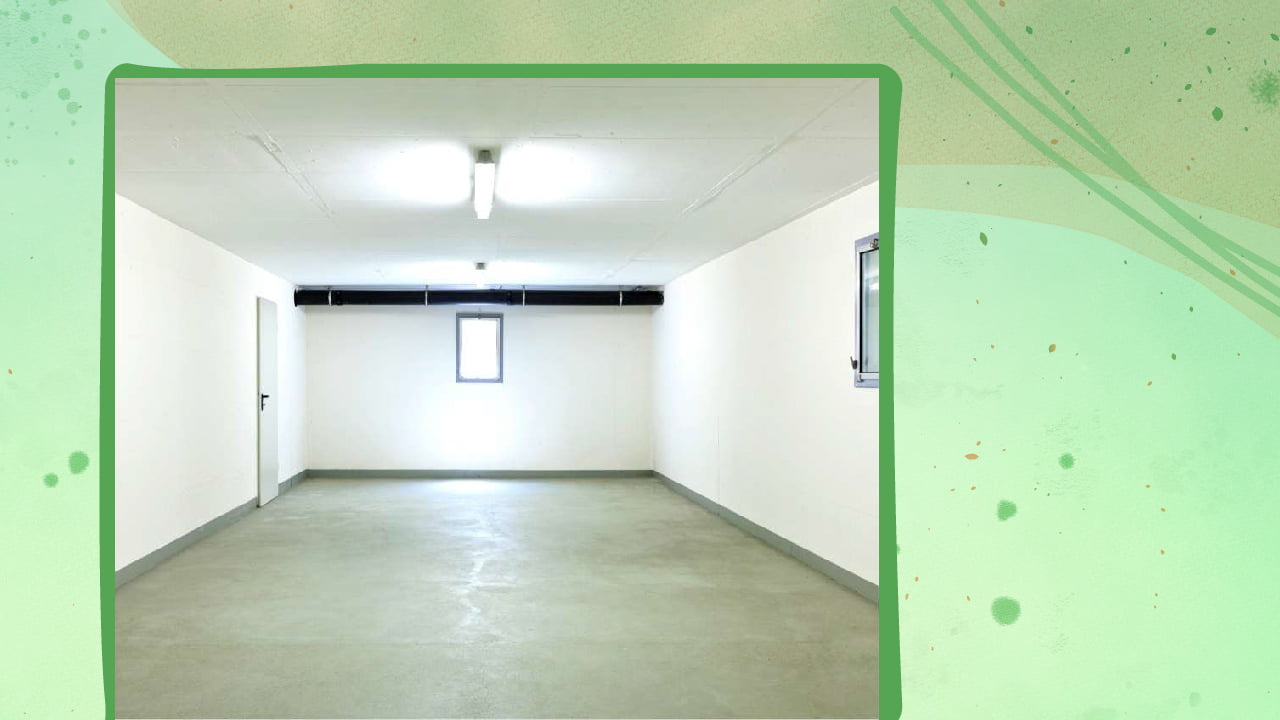 Reviewed by
Anton Giuroiu
Reviewed by
Anton Giuroiu
Soundproofing a garage may require soundproofing the door, walls, ceiling, or all using different soundproofing materials like acoustic panels, drywall layers, and Green Glue compound. Additionally, you can soundproof unfinished walls or design soundproof dropped ceilings.

Soundproofing your garage can be a great way to protect both your neighbors and your home from unwanted noises. Not only that, but it will also shield you from unwanted outside noise when working in the garage.
That’s why I’ve curated this exhaustive guide to help you soundproof your garage doors, walls, and ceilings using various invasive and non-invasive methods. Read on to know it all!
How to Soundproof a Garage

Why Should You Soundproof Your Garage?
Some of my readers may be asking about the need to soundproof their garage. After all, it is, in most cases, an isolated space that houses your car and sometimes acts as a storeroom. And yes, I agree that for cases like these, soundproofing will essentially be a waste of time and money.
However, some people use their garage as a DIY workshop, band practice room, home office, recording studio, or attached home theater. Hence, soundproofing the space becomes just as important, if not more, as soundproofing the rest of the home.
Besides, no one can predict the future, and you never know how you may end up using your garage in the coming years. So, it may not be a bad idea to soundproof it just after you finish reading this guide!
How To Go About Garage Soundproofing?
The process of soundproofing a garage actually starts with deciding on a few important things, the first of which is determining if you want to prevent sound from entering or exiting the space. This way, you can employ specific soundproofing techniques to make your soundproofing project optimally successful.
For example, if you plan to use the garage for band practice or DIY projects, you’d ideally want to keep the sound from escaping so that it doesn’t disturb your neighbors. The same holds true if you use it as a workshop and need to use any power tool frequently.
On the other hand, a garage turned into a home office should prevent outside noise from entering through the garage door and garage walls so that you have a peaceful environment to work in.
However, there may be some situations when you need to prevent the noise from entering and exiting the garage simultaneously. For example, if you want to turn your garage into a mini home theater, then you’d want to keep the sound inside for an immersive movie-watching experience as well as prevent outside noise from disturbing you.
Besides, soundproofing plays an important role in improving the sound quality inside the garage, which will be beneficial if you use the space for music practice. In hindsight, effective garage soundproofing techniques will facilitate better reverberation so that you hear better, especially if you play the drum or guitar frequently.
Is Your Garage Affected By Impact Or Airborne Noises?
Another factor that will play a large role in determining the right soundproofing methods for your garage is whether the space is being affected by airborne or impact noise.
For the unversed, airborne noise waves primarily travel through the air until they hit a surface, like your ears. Examples of this type of noise transfer include hearing people talking, dogs barking, or TV playing in the adjacent room.
Some airborne noise also travels via nearby structures, meaning you hear it after it passes through a solid surface like a wall or door. However, such noises are usually muffled as some of the sound waves are reflected before transmission and/or lose most of their energy during transfer.
Airborne sound leakage typically happens through gaps in the floor, door, or ceiling, fixing which usually doesn’t take a lot of effort.
The other type of noise to take care of is impact noise, produced by the interaction of an object with a structure. This interaction creates vibrations that travel through the structure and exit as sound waves. For example, the sound produced when you drag furniture on the floor or hammer a nail into the wall is impact noise.
How To Soundproof A Garage?

If you have a completely detached garage that is isolated from other rooms without windows, the task of soundproofing it will become a lot easier and less time-consuming.
But soundproofing a garage, in many cases, is a multi-step process that includes soundproofing the different structures like the walls, doors, and any window. This can include sealing any existing gaps as well as installing sound absorption materials, depending on the source of the noise and how it’s transported.
For instance, an empty wall will reflect the sound waves hitting it directly, causing an echo. In such cases, you may need to use acoustic foam panels or acoustic blankets for absorbing sound waves to minimize sound reflection. Aside from that, the uneven texture of these panels will transport the reflected sound waves in different directions, thereby reducing their intensity.
Sound leaks, on the other hand, are caused by gaps that allow outside noise to enter the garage or inside noise to escape. Hence, you would typically need to apply a sound barrier like acoustic tape to seal them.
What follows below is an exhaustive guide on the different ways of soundproofing a garage so that you can get all the bases covered. So, dive in!
How To Soundproof Garage Doors
If you have a metal garage door made of steel, know that it will generally have a hollow core and transfer more sound both ways. As such, the best way to counter this is to replace it with a solid-core garage door made of engineered wood. However, it may not be practical for everyone to make such a huge investment just to block noise.
That’s why here are a few ways you can try to soundproof your existing garage door. You can use one specific method or combine two or more, depending on how severe the noise transmission is.
1. Sealing The Gaps
Sealing doors below the garage door can help in blocking sound both ways, and you can use compressible weather-stripping rubber seals for this purpose. Aside from blocking noise, these garage soundproofing products can add an extra layer of insulation to your garage for trapping heat during the winter, making it more energy-efficient.
For any leaks on the sides of the garage door (including the top), consider specialized seal kits that are easy to install the DIY way. All you need to do is size the strips according to the length of the sides and apply them firmly using screws or adhesive.
Tip
use some acoustic caulk to add an extra layer of the seal between the strip and the gap. You can use a caulking gun with a thin nozzle for even application.
Whether you aim to block sound completely or want to achieve overall noise reduction, sealing gaps is an essential first step to making the garage soundproof.

2. Deadening The Sound
Deadening the sound using soundproofing materials can help reduce noise transmission both ways, especially for low or medium-frequency sounds. For this, you can use heavy-duty soundproof curtains or hang noise-blocking curtains. But before that, make sure you measure the door properly so that you don’t end up with too long or short a curtain.
Alternatively, you can increase the door mass by installing any soundproofing material like mass-loaded vinyl (MLV) panels. The idea behind this method is that by increasing the density of the door structure, you can reduce both airborne and impact noises that use the door for transmission or bounces of it.
Use vinyl cement for securing the panels on the doors and the same acoustic caulk hack mentioned above to seal any remaining gaps between the panels and the door.
Aside from that, you may consider using sound-damping foam mats, which can add both sound-absorbing and blocking properties to the door. Such mats come with a “sticky back,” so you can simply paste them on the door. Plus, this is a cheaper solution compared to installing MLV.
No matter which option you choose, always ensure that you aren’t putting excessive weight on the door opener. Otherwise, it may interfere with the opening and closing of the door or the door seal.
Soundproofing Garage Walls
Once you’re done soundproofing the garage door, it’s time to move on to the walls. One thing to keep in mind here is that you may need to employ invasive techniques for the best results, especially for blocking loud noises. However, I’d recommend starting with the non-invasive ones and observing their efficacy for some time.
1. Install Acoustic Foam Panels
One of the easiest things you can do to soundproof your garage walls is to add acoustic foam panels to them. These sound-absorbing panels will be extremely useful if you want to reduce the echo inside the space without breaking the bank. And the best part is that you don’t need to resort to installing acoustic foam panels on every inch of the walls as long as you know the exact location of the noise leak.
However, installing acoustic panels alone may not help you soundproof a garage if used on its own.
This is because these panels essentially prevent the sound waves from bouncing on the surfaces inside and amplifying, but they don’t do much to stop the entry or exit of sound waves per se. You will find soundproof panels (or acoustic panels, as they are commonly called) in different shapes and sizes, meaning covering those odd spots or corners won’t be an issue.
Tip
If your garage acts as a workshop, install the acoustic panels on the walls right behind the workstation, where you use the power tools for maximum results.
2. Hang Acoustic Blankets
You can also soundproof your garage walls (including glass windows) by hanging acoustic blankets that deaden the sound waves before they reach the structure behind them. As such, this method is most effective in preventing airborne sounds by absorbing them in their way.
Heavy-duty acoustic blankets, like the industrial ones, come equipped with grommets that make the installation process easier and faster.
3. Soundproofing Unfinished Walls
If you’re just building your garage or remodeling it and it has unfinished walls, then you have the best shot at creating soundproof walls.
From what I have seen, most residential garage walls are made of cement blocks or thin timber blocks placed over metal or wooden studs. So, if you have exposed studs or empty wall structures, you can add soundproofing materials like MLV or mineral wool insulation before installing the final layer of panels or drywall.
Tip
Apart from mineral insulation wool and wooden panels, you can use other soundproofing materials like fiberglass panels before finishing the walls.
In case your garage walls are being constructed of concrete or cinder blocks, then soundproofing the exposed studs will require some additional effort. For this, I’d suggest covering them with wooden panels or a few layers of drywall. Being porous in nature, concrete can easily adhere to thin treated wooden panels, after which you can install the drywall on the studs.

Some other ways to soundproof unfinished garage walls include:
A. Opting For “Room-Within-Room” Construction
Well, no, I’m not asking you to build a new room within your garage, but by room-inside-room construction, I mean separating two layers of drywall to reduce the contact points between them. And this, in turn, will reduce sound transfer between surfaces. For this, remove the existing drywall structure and build another drywall frame in a way that's separated from the former.
This process of separating the drywall frames is known as decoupling; however, you will need to keep a few things in mind before employing this method.
Firstly, decoupling can be a costly affair, depending on how big your garage walls are. So, it’s generally not the best way to soundproof a garage cheaply.
Secondly, ensuring proper structural stability of the two frames can be difficult, especially if you aren’t into DIY construction projects. And lastly, you may lose a lot of garage space (about a foot or more) on average due to the separation of the walls.
B. Double Wall Construction
Much similar to a room within room construction, a double wall construction has less decoupling but high efficacy when it comes to blocking noise.
C. Staggered Wall Stud Construction
If you don’t have much space in the garage for performing the above-mentioned room-in-room construction, then a staggering wall stud construction can be an effective alternative. All you need to know is to replace the existing wall frame with a 6-inch wide framing that has staggered studs.
D. Using Resilient Channels And Sound Isolation Clips
If the other construction alternatives aren’t feasible for you, you can try attaching resilient channels or sound isolation clips on the inner side of the drywall frame to complete the wall assembly.
For the unversed, a resilient channel is a narrow metal bar that attaches directly to the walls, and you can attach the noise clip to it. Finish it off by attaching a layer of drywall to the open end of the isolation clip. This will help absorb sound so that the sound waves don’t transmit from the drywall to the studs.
Make sure to leave some room at the junction where the drywalls of the wall and ceiling connect and fill it up with a sealant to reinforce the decoupling.
Image of ceiling joist
4. Add Mass To Your Existing Garage Wall
Adding a couple of drywall layers to existing garage walls can improve the overall sound absorption (acoustics) of the space for absorbing sound waves with low frequencies.
I’d strongly recommend including a soundproof material (like insulation wool or Green Glue compound) between two or more layers of drywall for optimal sound attenuation. However, this may not be as effective as decoupling the wall.

Garage Ceiling Soundproofing
You can use pretty much the same methods mentioned above for soundproofing garage ceilings. For example, you can try installing acoustic foam panels on the ceiling to absorb sound waves, or you can substitute them with acoustic ceiling tiles. In either case, start by designing a grid-like structure on the ceiling and then fill the space with panels or tiles.
Apart from this, you can design a drop ceiling by using the main ceiling as the foundation, but make sure the space between the two is filled with some soundproof material like mineral wool. Leaving too much empty space or installing fixtures like pipes and lights can aid sound transmission.
In case of exposed ceiling joists, you can fill the space between the joists and the ceiling with any efficient soundproofing material to reduce the echo. But for better results, consider adding one or two layers of drywall, which will block sound more effectively, thanks to its density.
Soundproofing Garage Floors
Soundproofing the garage floor can be achieved by placing EVA foam mats or anti-vibration pads on the surface to absorb the high-frequency noise coming from power tools. In case of low-frequency noises, you may spread a thick carpet on the floor to see (read: hear) results.
But if these tricks don't solve the problem, you may have to install acoustic insulation or soundproof material underneath the flooring. Since this will involve removing the existing flooring, it’ll be a better idea to hire a professional for the purpose.

Garage Soundproofing Final Words
If you’re serious about using your garage as a full-time music practice room, home theater, or workshop, then it’s in your best interest to combine different soundproofing methods.
And in such a case, I’d strongly recommend checking the STC (sound transmission class) of the soundproofing materials being used. Measured in decibels, this rating will give you a fair idea of how much sound the material can block. Remember that a high STC decibel rating will give you better soundproofing properties.
Likewise, check the NRC (Noise Reduction Coefficient, ranging from 1 to 100) of sound-absorbing materials, which is measured in percentage. The combination of high STC and NRC ratings will determine how soundproof your garage will be.
